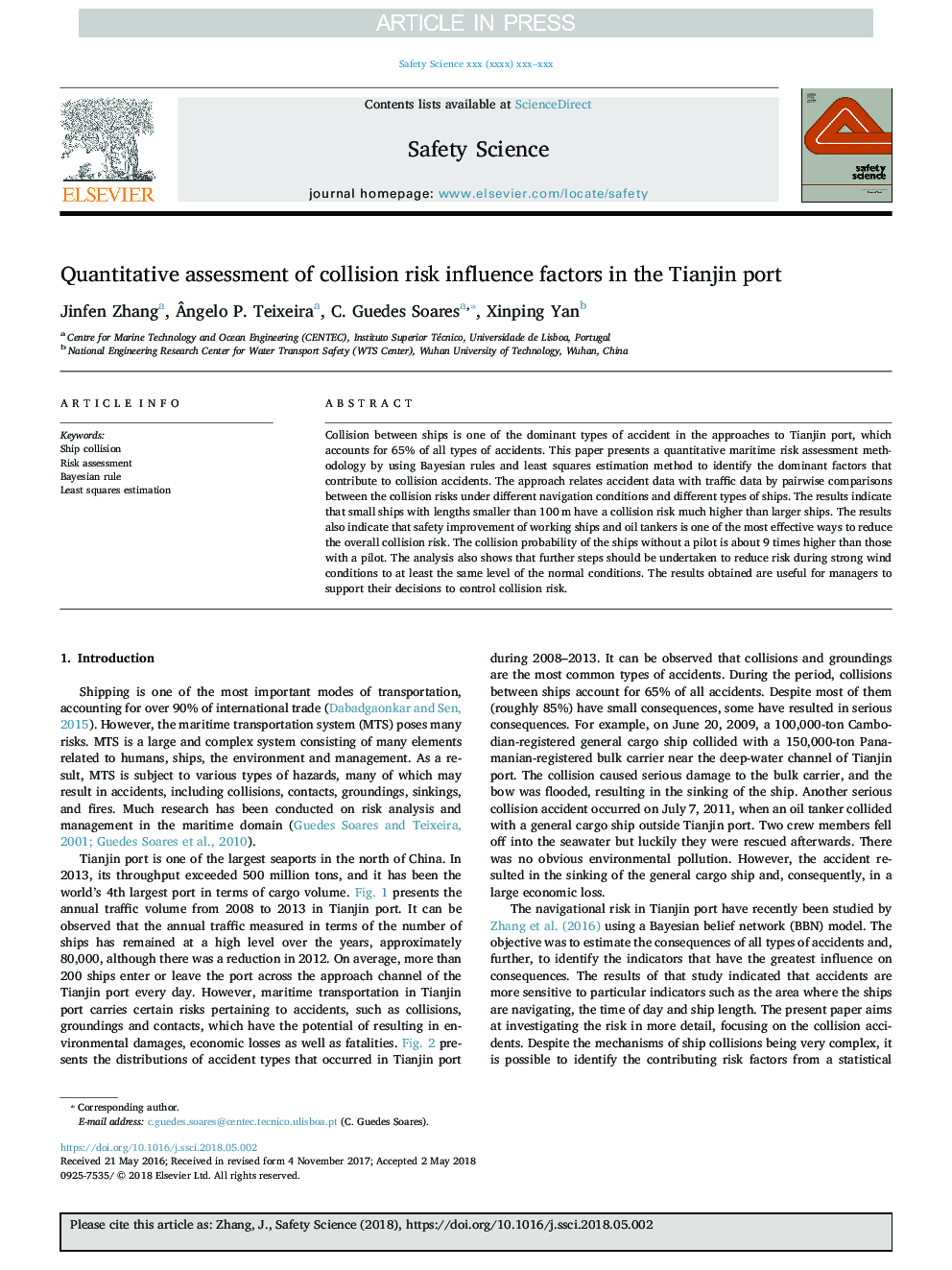| Article ID | Journal | Published Year | Pages | File Type |
|---|---|---|---|---|
| 11003101 | Safety Science | 2018 | 9 Pages |
Abstract
Collision between ships is one of the dominant types of accident in the approaches to Tianjin port, which accounts for 65% of all types of accidents. This paper presents a quantitative maritime risk assessment methodology by using Bayesian rules and least squares estimation method to identify the dominant factors that contribute to collision accidents. The approach relates accident data with traffic data by pairwise comparisons between the collision risks under different navigation conditions and different types of ships. The results indicate that small ships with lengths smaller than 100â¯m have a collision risk much higher than larger ships. The results also indicate that safety improvement of working ships and oil tankers is one of the most effective ways to reduce the overall collision risk. The collision probability of the ships without a pilot is about 9 times higher than those with a pilot. The analysis also shows that further steps should be undertaken to reduce risk during strong wind conditions to at least the same level of the normal conditions. The results obtained are useful for managers to support their decisions to control collision risk.
Related Topics
Physical Sciences and Engineering
Chemical Engineering
Chemical Health and Safety
Authors
Jinfen Zhang, Ãngelo P. Teixeira, C. Guedes Soares, Xinping Yan,
